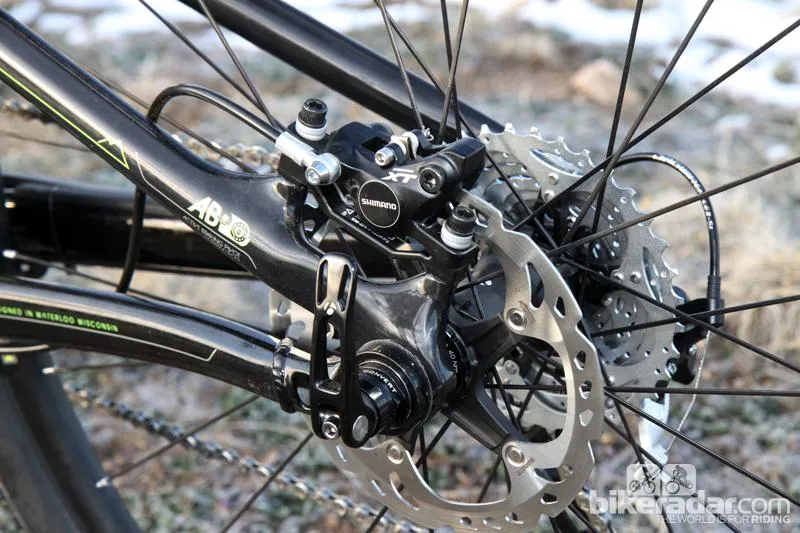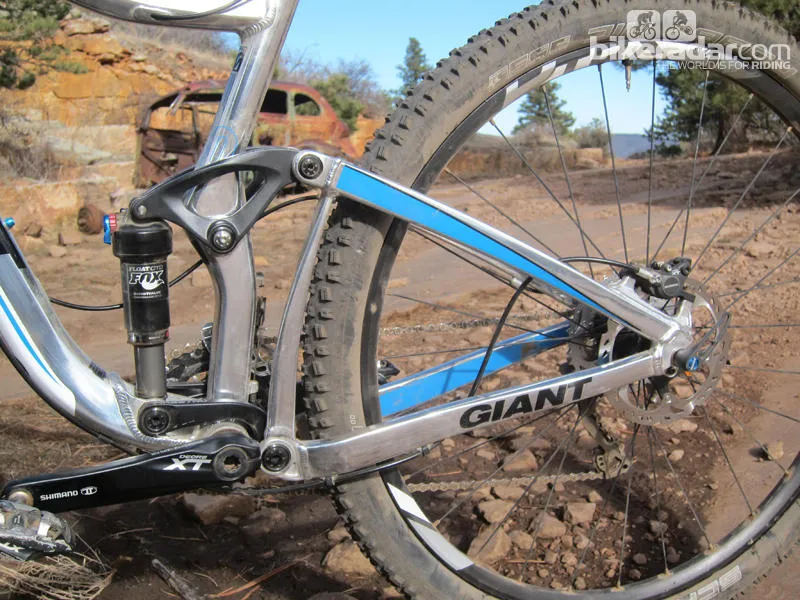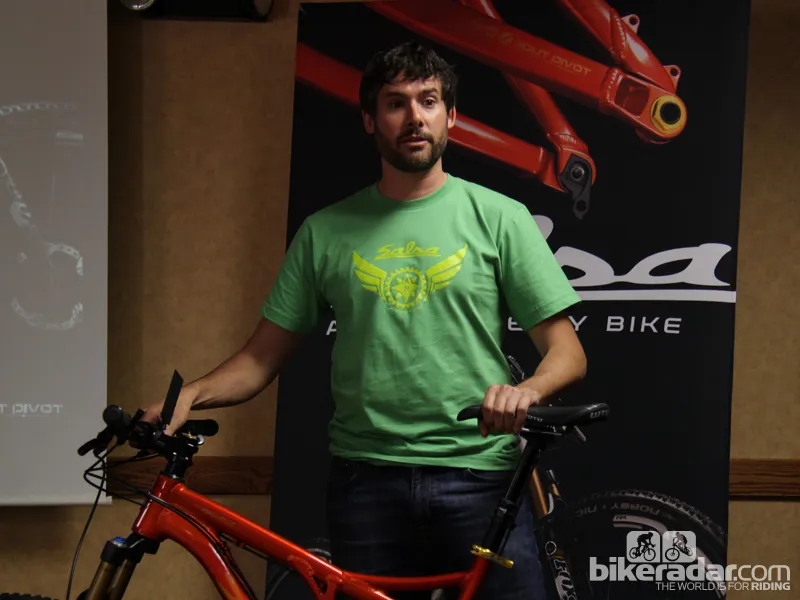If imitation is the sincerest form of flattery then suspension designer Dave Weagle has a number of admirers, some of whom he’s been locked in costly legal battles with. Weagle freely admits that he didn’t know what he was getting into when he started developing his now famed dw-link system - he just wanted to build a better mountain bike.
BikeRadar caught up with Weagle at the recent launch of the Salsa Cycles Spearfish and Horsethief, both of which now feature his Split Pivot suspension design. We picked his brain about his recent legal battles with Trek and Giant, how he works with companies to integrate his suspension systems into their bikes, and what motivates him to keep developing new designs.
There are a number of similar and sometimes conflicting suspension designs on the market. Are there a finite number of ways to make mountain bike suspension work?
There are a lot of ways to make suspension work in general, but there aren’t a lot of ways to make it work within the structure of a bicycle. It’s difficult when you have a person involved and you have to fit that person to the machine - it makes things tricky.
The litigation side is brutal. It’s probably the worst thing I’ve ever gone through in my life. I hate everything about patents. I hate the patent system, but I can’t change it. I have to work within it. It gets insanely convoluted when you get into the litigation process.
As a small company it’s incredibly difficult to enforce patents. In this business, if I want to continue to have a business I have to do something, I have to protect something. I only protect my most worthwhile ideas; even then it’s extremely costly and time consuming.




Weagle's Split Pivot and Trek's ABP systems both use concentric rear axle pivots
There are many dual-link bikes out there from a number of companies. In your opinion, how many do you feel are skirting or infringing upon what you’ve done?
I think that’s a good way to put it. I think there are a lot of them that are ‘skirting’ what I’ve done, or trying to make a ‘me too’ bike.
It’s funny, when you start looking at some of them, some of those dual-link bikes are closer in terms of function to Split Pivot than a dw-link bike. The axle path curvature really doesn’t change all that much throughout the stroke of the travel. For a dw-link bike, a millimeter or two is worlds of difference in terms of performance.




The dw-link and Giant Maestro systems are functionally very similar
Here’s another battle of sorts - Split Pivot versus dw-link. Is one better than the other? Do they have different strengths and weaknesses?
They’re both incredibly capable systems. Every bike is a compromise. In the bicycle industry I think people think ‘compromise’ is a dirty word. Some companies might be like, “We have no compromises.” That’s bullshit - suspension is all about compromise. Geometry, fit and feel are all about compromise. If you can’t admit that then you have no idea what you’re doing, because that’s the reality.
I look at each bike on its own merits. We design for feel. I sit down with the companies and discuss feel. For example, an Ibis Ripley; the desired feel is probably closer to the 80mm Salsa Spearfish than it is to the 120mm Salsa Horsethief. I really try to boil it down to the desired trail feel.
How do you start working with a company to integrate one of your suspension systems into their bike line? What’s the development process like?
We start off riding their existing product - product they are comfortable with or product they are interested in - and talk about how it rides. We develop a language of feel and break it down to different parts of the travel, different situations. Sometimes it’s not even real words. Sometimes it’s like, ‘Clack, clack, clack!’ As a rider, you kind of know what that means.
When comparing dw-link bikes from different brands, it seems as though they have different feels from one brand to another.
Each company has its own vision for what the bikes should be. It’s the combination of everything: pivot placement, dampers, etc. It comes down to how we want a bike to attack corners, how we want it to handle square-edge bumps. Do we want it to be firmer or more plush?
Do you spend a lot of time working with specific athletes to refine your designs?
On request I do. When you have a guy like Stevie Smith (who is at the top of the sport) I do because I want them to succeed. If I can help Steve pull a tenth of a second off of his run, that’s awesome. It’s actually easier than designing a trail bike for a wide range of riders. I know how he rides. I can run data on the bike and I can build the bike to suit.
If you were designing a bike for yourself what sort of feel would you prioritize?
I think it’s a lot of the things I’ve prioritized in dw-link and Split Pivot designs. For me, I definitely look for cornering support. I definitely want the bike to be efficient out of the saddle.
I want geometry to be lower, slacker, longer. I grew up riding motocross and I love downhill bikes - that’s the side of the sport that I cut my teeth on. I ride my cross-country bikes like I ride my downhill bikes. For me, I’m just trying to have fun out there and get a little rowdy on the trail.

Weagle's designs seek to balance the attributes that make riding most enjoyable
You have three suspension designs on the market: dw-link, Split Pivot and Delta. Why develop competing suspension setups?
Because I can. It’s my passion. You can’t ask a painter to stop painting. I think there’s still a lot of real estate out there. I have other designs I’ve developed and haven’t brought to market.
It seems as though your designs have led to a sea change in how companies approach suspension design. They’ve certainly introduced the phrase “anti squat” into the parlance of mountain bikers.
I think that, over the past five years, there’s been a mass realization that the kinematics of suspension are a really efficient way to extract performance from a bicycle.
We went through the whole platform damper phase and that’s kind of fading out. Some companies are still doing it, but most are realizing that the best way to do this is to use the kinematics of the bike and let the damper do its job separately.
It’s asinine to me that you would choose to use a bunch of low-speed compression to slow the suspension down when you’re accelerating, because then you are drastically over-damped when you’re coasting. It’s a terrible compromise.
One of your constraints is that you’re working within the confines of existing damper technology. If you were to create a new shock from the ground up to work with your suspension designs, what would it look like? How would it be different?
I would simplify it significantly. We don’t need all those bells and whistles.
Is there a project you’ve worked on that you’re most proud of?
The Orion project. It’s a motorcycle project I’ve been working on. I actually developed a prototype, but I didn’t finish building it because I spent all my money on stupid litigation. But now I’m working with a specific company on it.
Can you say which motorcycle company you’re partnered with?
No, but it’s pretty awesome.
What do you want your lasting impact on the sport of mountain biking to be?
I hope I’ve helped people to enjoy the trail more. Everyone can benefit from more traction. Everyone can benefit from more confidence and not having to mess around with more levers. I hope some of the things that I’ve done have helped to push the industry in a direction that’s more positive.

